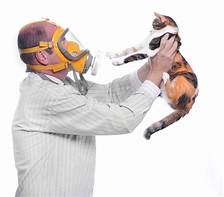How to Treat Pet Allergies
Pet allergies are a common problem, affecting up to 10% of the population.

Symptoms of Pet Allergies
The most common symptoms of pet allergies include:
- Sneezing
- Runny nose
- Itchy, watery eyes
- Coughing
- Wheezing
- Shortness of breath
- Skin rash
- Hives
Causes of Pet Allergies
Pet allergies are caused by an allergic reaction to proteins found in pet saliva, urine, and dander.
Treatment for Pet Allergies
There is no cure for pet allergies, but there are a number of treatments that can help to reduce symptoms.
Over-the-Counter Medications
Over-the-counter medications, such as antihistamines and decongestants, can help to relieve symptoms of pet allergies.
Prescription Medications
In some cases, prescription medications may be necessary to control symptoms of pet allergies.
Allergy Shots
Allergy shots, also known as immunotherapy, can help to desensitize the immune system to pet allergens.
Environmental Control
Environmental control measures can help to reduce exposure to pet allergens.
- Keep pets out of the bedroom.
- Wash hands after handling pets.
- Vacuum floors and furniture frequently.
- Use air purifiers to remove pet allergens from the air.
Pet Allergy Prevention
There are a few things you can do to help prevent pet allergies in your child:
- Avoid getting a pet if you know that your child is allergic to pet.
- If you do have a pet, keep it out of the bedroom and other areas where your child spends a lot of time.
- Wash your hands after handling your pet.
- Vacuum floors and furniture frequently.
- Use air purifiers to remove pet allergens from the air.
Declaration: All article resources on this website, unless otherwise specified or labeled, are collected from online resources. If the content on this website infringes on the legitimate rights and interests of the original author, you can contact this website to delete it.




